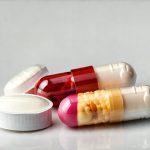Antibiotics are arguably one of the most significant advancements in modern medicine, responsible for saving countless lives by effectively combating bacterial infections. However, their widespread use – and often overuse – has led to growing concerns about unintended consequences beyond simply fostering antibiotic resistance. While much attention is rightly focused on the development of ‘superbugs’, a less discussed but equally important area involves the potential impact of antibiotics on our own tissues, specifically the delicate lining of the bladder. The gut microbiome’s connection to overall health is well-established, but increasingly research suggests that repeated or prolonged antibiotic use can disrupt microbial balance throughout the body, including within the urinary tract, and potentially contribute to long-term changes in the bladder itself.
The bladder, a remarkably resilient yet sensitive organ, relies on a complex interplay between its epithelial lining – urothelium – and associated microbiome for optimal function. The urothelium acts as a crucial barrier against harmful substances and pathogens, while also regulating fluid balance and signaling pathways. Disruptions to this delicate ecosystem can compromise the bladder’s integrity over time, potentially leading to chronic inflammation, increased susceptibility to infection, and even contributing to conditions like interstitial cystitis/bladder pain syndrome (IC/BPS). This article will explore the emerging evidence surrounding the relationship between antibiotic use and potential damage to the bladder lining, highlighting current research and areas for future investigation.
The Urothelium & Its Microbial Ecosystem
The urothelium isn’t a sterile environment; rather, it harbors its own unique microbiome, distinct from that of the gut or skin. This microbial community is thought to play an important role in maintaining bladder health, influencing immune responses and protecting against pathogens. Historically, research focused heavily on identifying urinary tract infections (UTIs) caused by E. coli as the primary concern, but now we understand there’s a more complex interaction between bacteria, fungi, and even viruses within the urinary tract. Recent studies using advanced sequencing technologies are revealing the composition of these microbial communities in healthy individuals versus those with bladder dysfunction or chronic pain, providing invaluable insights into their role in maintaining bladder homeostasis.
Antibiotics, by their very nature, aren’t selective – they target a broad spectrum of bacteria, including both harmful and beneficial species. This indiscriminate killing can disrupt the delicate balance of the urothelium’s microbiome, potentially leading to dysbiosis (an imbalance). Repeated antibiotic courses further exacerbate this disruption, leaving the bladder more vulnerable to colonization by opportunistic pathogens and diminishing its natural defenses. The consequences of this microbial shift aren’t fully understood yet, but research suggests it may contribute to chronic inflammation within the bladder wall, impacting urothelial function and potentially leading to persistent symptoms.
Furthermore, the composition of the gut microbiome significantly influences the urinary tract microbiome through what’s known as the “gut-bladder axis.” Antibiotics profoundly impact the gut microbiome, reducing diversity and altering its functionality. This altered gut environment can then influence immune responses and metabolic pathways that ultimately affect the bladder’s health. – A compromised gut microbiome may lead to increased intestinal permeability (“leaky gut”), allowing bacterial metabolites and inflammatory compounds to circulate systemically, potentially reaching the bladder and triggering inflammation. – Alterations in short-chain fatty acid (SCFA) production within the gut, due to antibiotic-induced dysbiosis, can also impact immune function and contribute to bladder dysfunction.
Mechanisms of Bladder Lining Damage
The ways antibiotics might damage the bladder lining are multifaceted and still under investigation. One key mechanism revolves around inflammation. Chronic low-grade inflammation is a hallmark of many bladder conditions, including IC/BPS. Repeated antibiotic use appears to exacerbate this inflammatory state in several ways: – Direct Urothelial Toxicity: Some studies suggest that certain antibiotics can directly induce oxidative stress within urothelial cells, damaging their structure and function. This damage can compromise the barrier integrity of the bladder lining, making it more permeable and susceptible to irritants. – Immune Dysregulation: Antibiotics can alter immune responses in the bladder, potentially leading to an overactive or misdirected immune system that attacks healthy tissues. The disruption of microbial balance within the bladder may also trigger chronic immune activation, further contributing to inflammation. – Altered Epithelial Permeability: As mentioned previously, a disrupted urothelium loses its protective barrier function. This increased permeability allows harmful substances from urine and systemic circulation to come into contact with underlying tissues, triggering inflammatory responses and potentially leading to pain and discomfort.
Another emerging area of concern is the impact of antibiotics on bladder stem cells. These cells are responsible for repairing and regenerating damaged urothelial tissue. If antibiotic-induced inflammation or toxicity compromises their function, it could impair the bladder’s ability to heal itself, contributing to chronic bladder dysfunction. – Research suggests that certain antibiotics can interfere with stem cell proliferation and differentiation, hindering tissue repair processes. – The altered microbiome resulting from antibiotic use may also impact stem cell behavior indirectly by influencing inflammatory signaling pathways.
Long-Term Consequences & Future Directions
The long-term consequences of antibiotic-induced bladder damage are still being elucidated, but the potential implications are significant. Chronic inflammation can lead to fibrosis (scarring) within the bladder wall, reducing its capacity and elasticity. This can result in urinary frequency, urgency, pain, and other debilitating symptoms characteristic of IC/BPS. While a direct causal link between antibiotic use and IC/BPS hasn’t been definitively established, there is growing evidence suggesting it may be a contributing factor in susceptible individuals. – Several studies have shown a correlation between frequent antibiotic prescriptions and an increased risk of developing chronic pelvic pain syndromes, including IC/BPS. – Individuals with a history of repeated UTIs treated with antibiotics are also more likely to experience persistent bladder symptoms even after the infection has cleared.
Future research is crucial to better understand this complex relationship and develop strategies to mitigate potential damage. This includes: – Larger epidemiological studies: Investigating the long-term effects of antibiotic exposure on bladder health in diverse populations. – Mechanistic studies: Delving deeper into the specific pathways by which antibiotics impact urothelial cells, immune responses, and microbial communities. – Development of targeted therapies: Exploring alternative strategies to prevent and treat UTIs that minimize antibiotic use, such as probiotics, D-mannose, and immunomodulatory approaches. – Personalized medicine approaches: Identifying individuals who are most vulnerable to antibiotic-induced bladder damage based on their genetic predisposition, microbiome composition, and medical history. Ultimately, a more nuanced understanding of the interplay between antibiotics, the urothelium, and the microbiome is essential for safeguarding bladder health in the face of increasingly widespread antibiotic use. Considering daily habits that can also impact the bladder is crucial for preventative care. Understanding how to support the bladder after antibiotic treatment may help minimize long term damage. Additionally, incorporating prebiotic-rich foods into your diet can support a healthy microbiome and bladder lining.





















